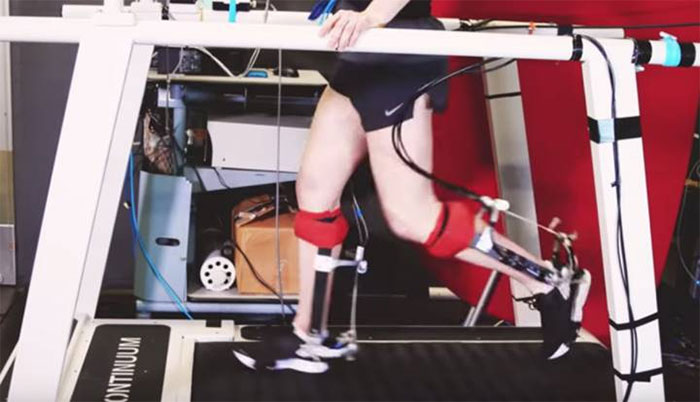Hate to run? Don't worry, this assistive skeleton will help you
The structure of the human body is suitable for jogging, but in fact not everyone likes this type of sport, even many people consider it a torture.
Even if you have a good physique, it is not always easy and comfortable to run. So researchers at Stanford University in the United States have developed a new accessory that can change your perception of running by making it a little easier.

This system helps the leg muscles "shed" significantly the burden.
The exoskeleton is being developed by the team to make running accessible to the average person, including a lightweight carbon fiber frame, straps and cables attached to an external motor. This system helps the leg muscles "unload" significantly the burden, helping to run about 15% easier than usual.
It's an impressive improvement from a relatively simple device, but you'll be even more surprised to learn that exoskeleton also has to eliminate the extra load when running with a fixed device in the foot.
If exoskeleton was cut off and running, it would cause the body to increase energy waste, increasing 13% difficulty compared to without exoskeleton. However, experiments have shown that, if properly powered by the engine, exoskeleton will reduce energy waste when running, making motoring 15% easier to run than running without exoskeleton. and 25% easier than running where exoskeleton has been disconnected.
"When people run, the legs move very similar to an engine, so we were surprised that the engine-like help was not very effective , " said Steve Collins, author of the study. "We all have a sense of how we run or walk, but top scientists still have to continue to explore ways for the human body to allow us to move more effectively. the reason why experiments like this are so important " .
The team is currently unable to complete the system and hopes to further reduce the impact from exoskeleton itself, further boosting the device's performance and enhancing running motion. Of course, the biggest obstacle is how the system can be worn freely rather than tightly attached to an external apparatus as today.
- With today's science and technology, is Iron Man armor possible?
- Hand-mounted skeletons help new soldiers become marksmen
- Why do you always bathe and lighten it every day and hate it?
- Robots for nuclear power workers
- The area that perceives the hate feelings of the brain
- The 1,300-year-old twisted skeleton made the archeology confused
- Why do dogs hate cats?
- Medical advances turn fiction into reality
- Robotic kit with global safety certification
- Discovered a 3,500-year-old male and female skeleton in the fist position
- The mysterious 'alien skeleton' is decoded
- The skeleton of a mistress holding 1,600 years is a man
- Hate to eat vegetables is because ... genes
- Mysterious 'monster' skeleton in Russia
 The US company is about to build a supersonic passenger plane of 6,000km / h
The US company is about to build a supersonic passenger plane of 6,000km / h Japan develops avatar robot as in fiction film
Japan develops avatar robot as in fiction film Australia tested the world's first mango picking robot
Australia tested the world's first mango picking robot America develops technology to separate water from animal waste
America develops technology to separate water from animal waste